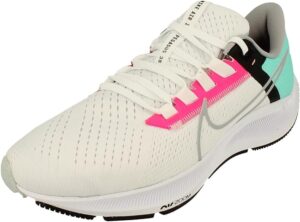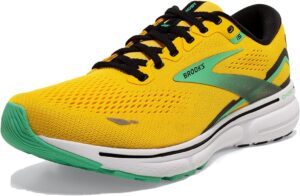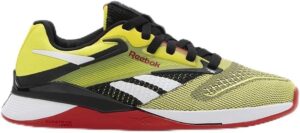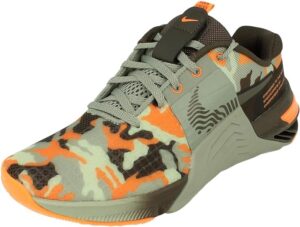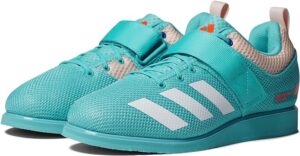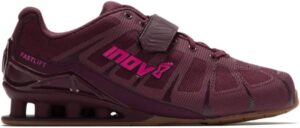
Finding the right sneakers for your workout is crucial for optimizing performance, preventing injuries, and ensuring comfort. With the myriad of options available, it can be overwhelming to choose the perfect pair. In this guide, we’ll explore how to select the right sneakers for various workouts, including running, cross-training, and weightlifting, highlighting why each type requires specific features.
Why Choosing the Right Sneakers Matters:
Selecting appropriate sneakers for your workout is essential for several reasons:
1. Performance Enhancement:
Performance enhancement is crucial to selecting the right workout sneakers, as the shoes you wear can significantly impact your ability to perform at your best. Here’s how the right shoes can enhance your performance:
The right sneakers can enhance your performance by providing proper support, stability, and cushioning tailored to your activity. In addition, the right sneakers can provide:
Optimal Cushioning and Energy Return:
High-quality workout sneakers are engineered with advanced cushioning technologies that provide adequate shock absorption and energy return. This means that with each stride or movement, the shoes help to minimize the impact on your joints while also propelling you forward, enhancing your overall efficiency and speed.
Improved Stability and Support:
Proper stability and support are essential for maintaining proper biomechanics and preventing excessive movement that can lead to inefficiencies or injuries. Well-designed workout sneakers feature supportive midsoles, reinforced heel counters, and secure lacing systems that help stabilize your feet and ankles, allowing you to maintain control and balance during dynamic movements.
Enhanced Traction and Grip:
Whether running on pavement, performing agility drills, or lifting weights, having adequate traction and grip is crucial for maintaining traction and stability. Workout sneakers with durable rubber outsoles and multidirectional tread patterns offer superior grip on various surfaces, allowing you to confidently push off and change direction without slipping or losing traction.
Customized Fit and Comfort:
The right workout sneakers should feel like an extension of your feet, providing a snug yet comfortable fit that eliminates distractions and discomfort. Many brands offer customizable features such as adjustable straps, interchangeable insoles, and anatomically shaped footbeds that allow you to tailor the fit to your unique foot shape and preferences, ensuring maximum comfort and performance.
2. Injury Prevention:
Injury prevention is paramount when it comes to choosing workout sneakers, as the wrong shoes can increase your risk of developing various injuries. Ill-fitting or unsuitable footwear can lead to discomfort, pain, and even injuries such as sprains, strains, or stress fractures. Here’s how the right shoes can help prevent injuries:
Proper Shock Absorption and Impact Distribution:
High-impact activities such as running and jumping place significant stress on your joints, particularly your knees, ankles, and hips. Workout sneakers with adequate cushioning and shock-absorbing properties help to dissipate the forces of impact, reducing the strain on your joints and lowering your risk of overuse injuries such as stress fractures, shin splints, and tendonitis.
Corrective Support and Alignment:
Many people have biomechanical issues such as overpronation (excessive inward rolling of the foot) or supination (excessive outward rolling of the foot) that can increase their susceptibility to injuries. Specialized workout sneakers, such as stability or motion control shoes, are designed to provide corrective support and alignment, helping to prevent excessive pronation or supination and reducing the risk of related injuries.
Ankle and Arch Support:
Weak ankles or fallen arches can predispose you to sprains, strains, and other foot-related injuries. Workout sneakers with built-in ankle support, arch support, or customizable orthotic inserts help to stabilize your feet and ankles, reducing the likelihood of rolling your ankles or developing conditions such as plantar fasciitis or Achilles tendonitis.
Durable Construction and Materials:
Cheap or poorly constructed workout sneakers can quickly break down and lose their supportive features, increasing your risk of injury. Look for shoes made from durable materials such as high-quality synthetic fabrics, reinforced overlays, and sturdy rubber outsoles that can withstand the rigors of your workouts and provide long-lasting support and protection.
3. Comfort:
Comfortable sneakers ensure an enjoyable workout experience and are essential for ensuring an enjoyable and effective workout experience encouraging you to stay motivated and engaged.
Here’s how the right workout sneakers can enhance your comfort:
Breathable Materials and Ventilation:
Sweaty feet can lead to discomfort, blisters, and even fungal infections. Workout sneakers with breathable mesh uppers, perforated panels, and moisture-wicking linings allow air to circulate freely around your feet, helping to regulate temperature and keep your feet cool and dry throughout your workout.
Plush Cushioning and Padding:
The right amount of cushioning and padding is essential for reducing pressure points and preventing fatigue during long workouts. Look for shoes with plush midsoles, padded collars, and cushioned insoles that provide a soft and supportive feel underfoot, helping to absorb shock and alleviate stress on your joints and muscles.
Roomy Toe Box and Secure Fit:
Proper fit is paramount for comfort and performance. Workout sneakers with a roomy toe box accommodate natural toe splay and prevent cramped or pinched toes, while a secure heel and midfoot lockdown ensure a snug yet comfortable fit that minimizes slippage and rubbing.
Lightweight Construction and Flexible Design:
Bulky or rigid shoes can feel cumbersome and restrict your natural range of motion, leading to discomfort and decreased agility. Look for lightweight workout sneakers with flexible designs that allow for natural foot movement and agility, ensuring a comfortable and responsive feel with every step or movement.
Now, let’s delve into the types of workouts and the corresponding sneakers you should consider:
1. Running:
Running is a high-impact activity that puts significant stress on your feet, ankles, knees, and hips and requires sneakers with ample cushioning, shock absorption, and support to mitigate the impact on your joints and provide a smooth stride., choosing the right running shoes is paramount for injury prevention and performance enhancement.
Cushioning:
The cushioning in running shoes absorbs the impact forces generated with each stride, reducing stress on your joints. Look for shoes with adequate cushioning, which can vary depending on your running style and preferences. Some shoes feature responsive cushioning that provides a springy feel, while others offer plush cushioning for long-distance comfort.
Support and Stability:
Running shoes should provide sufficient support to maintain proper foot alignment throughout your gait cycle. Look for features such as medial posts or arch support to help prevent overpronation or supination, which can lead to injuries like plantar fasciitis or shin splints. Additionally, shoes with a supportive heel counter and midfoot lockdown can enhance stability and prevent excessive rolling of the foot.
Fit and Flexibility:
The fit of your running shoes is crucial for comfort and performance. Ensure there’s enough room in the toe box to prevent crowding or rubbing, but not too much space to cause slippage. The shoe should securely hold your foot in place without feeling restrictive. Additionally, consider the flexibility of the shoe’s sole, which should allow for a natural range of motion without being too stiff or too flimsy.
Breathability and Durability:
Look for shoes made from breathable materials to help keep your feet cool and dry, reducing the risk of blisters and discomfort. Additionally, consider the durability of the shoe, especially if you’re a frequent runner. Reinforced areas such as the toe box and outsole can prolong the lifespan of your shoes and provide added protection against wear and tear.
Two excellent models for running are:
a. Nike Air Zoom Pegasus:
Renowned for its versatility, the Nike Air Zoom Pegasus offers responsive cushioning and a supportive fit, making it ideal for both short sprints and long-distance runs.
b. Brooks Ghost:
The Brooks Ghost features a balanced cushioning system that adapts to your stride, providing a plush feel and reliable support for neutral runners.
2. Cross-Training:
Cross-training involves a variety of movements such as jumping, lateral movements, and weightlifting. Therefore, cross-training sneakers should offer stability, flexibility, and durability. Consider these models:
a. Reebok Nano X:
Designed specifically for cross-training, the Reebok Nano X offers a stable base, abrasion-resistant upper, and responsive cushioning, making it suitable for high-intensity workouts and lifting sessions.
b. Nike Metcon:
The Nike Metcon combines stability and versatility, featuring a low-profile heel for improved stability during lifts and a flexible forefoot for agility during dynamic movements.
3. Weightlifting:
Weightlifting demands sneakers with a flat, firm sole to ensure a stable base and maximize power transfer. Look for models with minimal cushioning and a secure fit. Here are two top picks:
a. Adidas Powerlift 5:
The Adidas Powerlift 5 features a lightweight design with a high-density midsole and a wide strap for enhanced support and stability during heavy lifts.
b. Inov-8 Fastlift:
The Inov-8 Fastlift offers a responsive feel with a low-profile platform, perfect for maintaining balance and stability during squats, deadlifts, and Olympic lifts.
For more tips on maximizing your workout performance, check out our article on “4 Tips to Prevent Common Sports Injuries”
Conclusion:
Choosing the right sneakers for your workout is crucial for optimizing performance, preventing injuries, and ensuring comfort. By understanding the specific features required for running, cross-training, and weightlifting, you can select the perfect pair to support your fitness goals. Whether you’re hitting the pavement, crushing a HIIT session, or dominating the weight room, investing in the right sneakers will elevate your workout experience to new heights.

